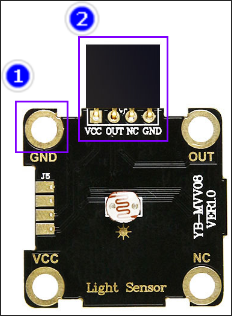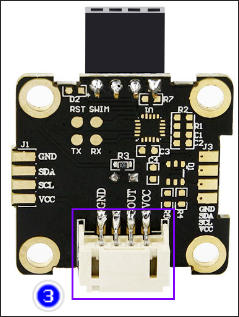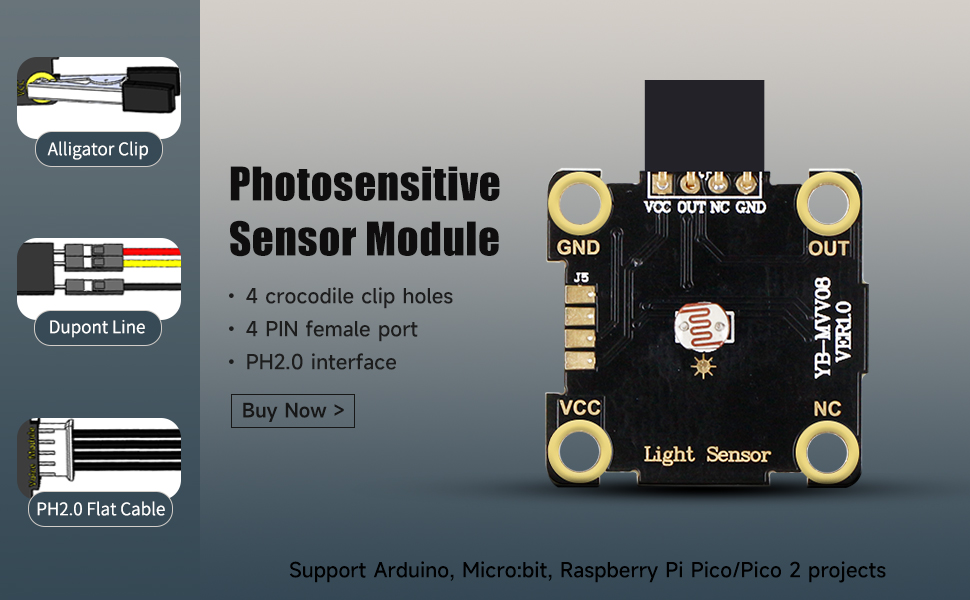Welcome to Photosensitive module repository
Introduction of Photosensitive module
1. Working principle
Photosensitive sensors are one of the most common sensors. They are mainly used in: photocells, photo-multiplier tubes, photo-resistors, photo-transistors, solar cells, infrared sensors, ultraviolet sensors, fiber optic sensors, color sensors, CCDs, and CMOS image sensor, etc.
This module is a photosensitive resistor as a sensor, which convert an optical signal into an electrical signal by photo-resistor.
The analog value of the photosensitive module output ranges from 0 to 1023. The stronger the light intensity, the OUT will output smaller the analog value. When the light intensity is weak, the OUT will output bigger the analog value.
2.Practical application
2.1 Circuit monitoring switch
2.2 automatic lighting
3.About module


3.1 Photosensitive module possess 4 Alligator clip port, Corresponding to GND, VCC, NC and OUT. OUT pin is the signal output pins of the module.
3.2 4 pin female socket.
3.3 PH2.0 cable interface.
The photosensitive sensor detects the illumination intensity of the current environment. The stronger the illumination intensity, OUT pin will output smaller value. The weaker the illumination intensity, OUT pin will output larger value.
Working Voltage: 3.3V/5V

